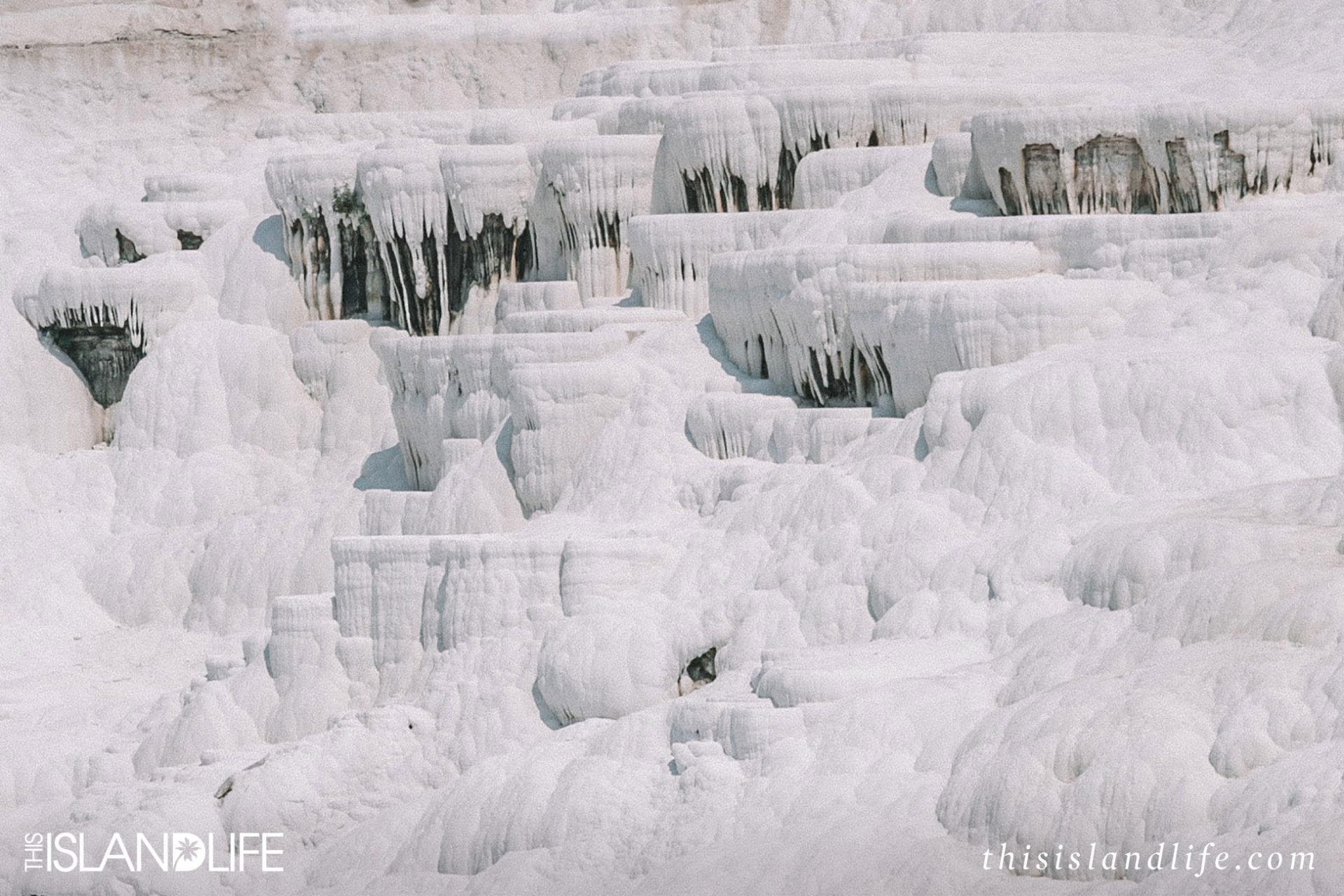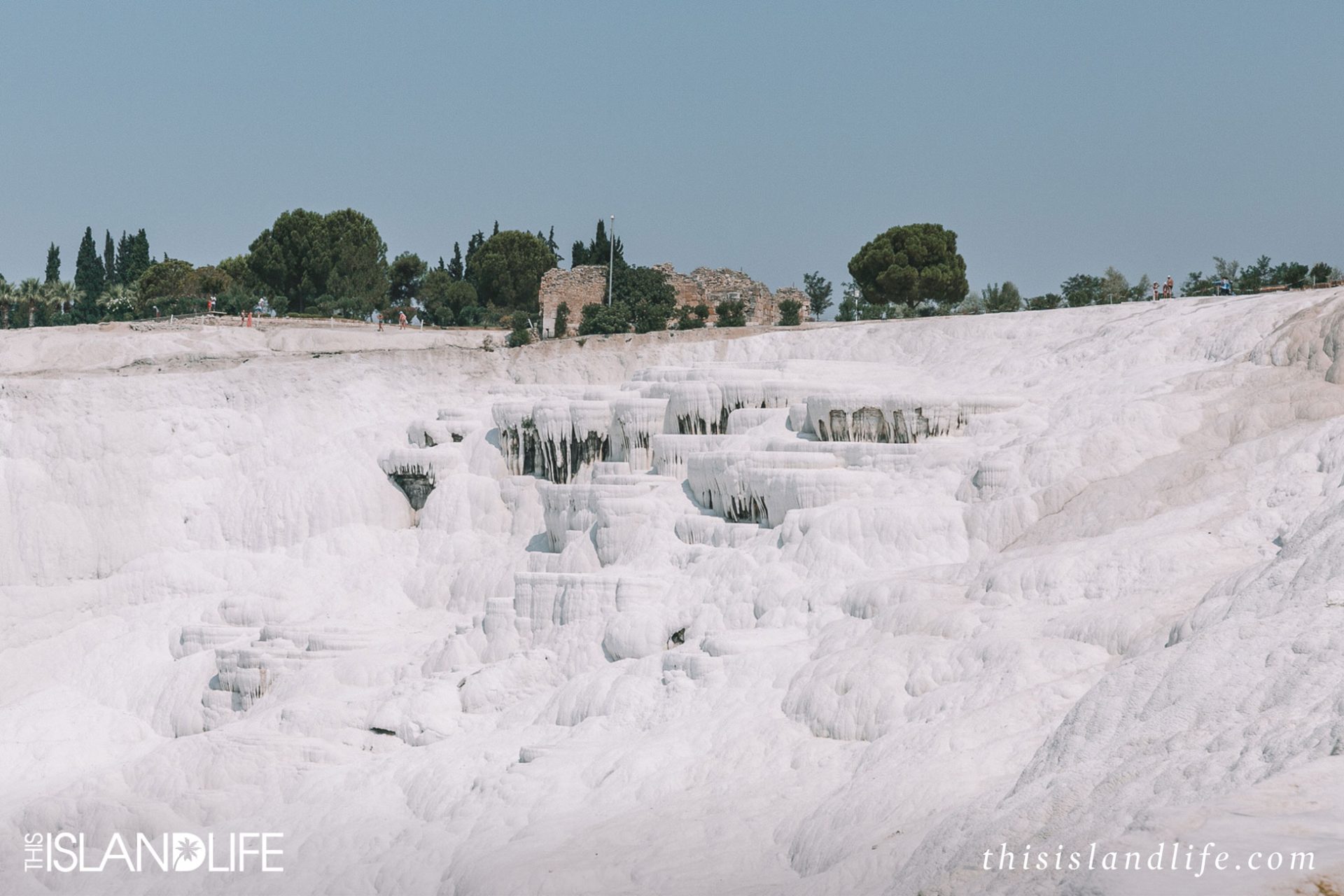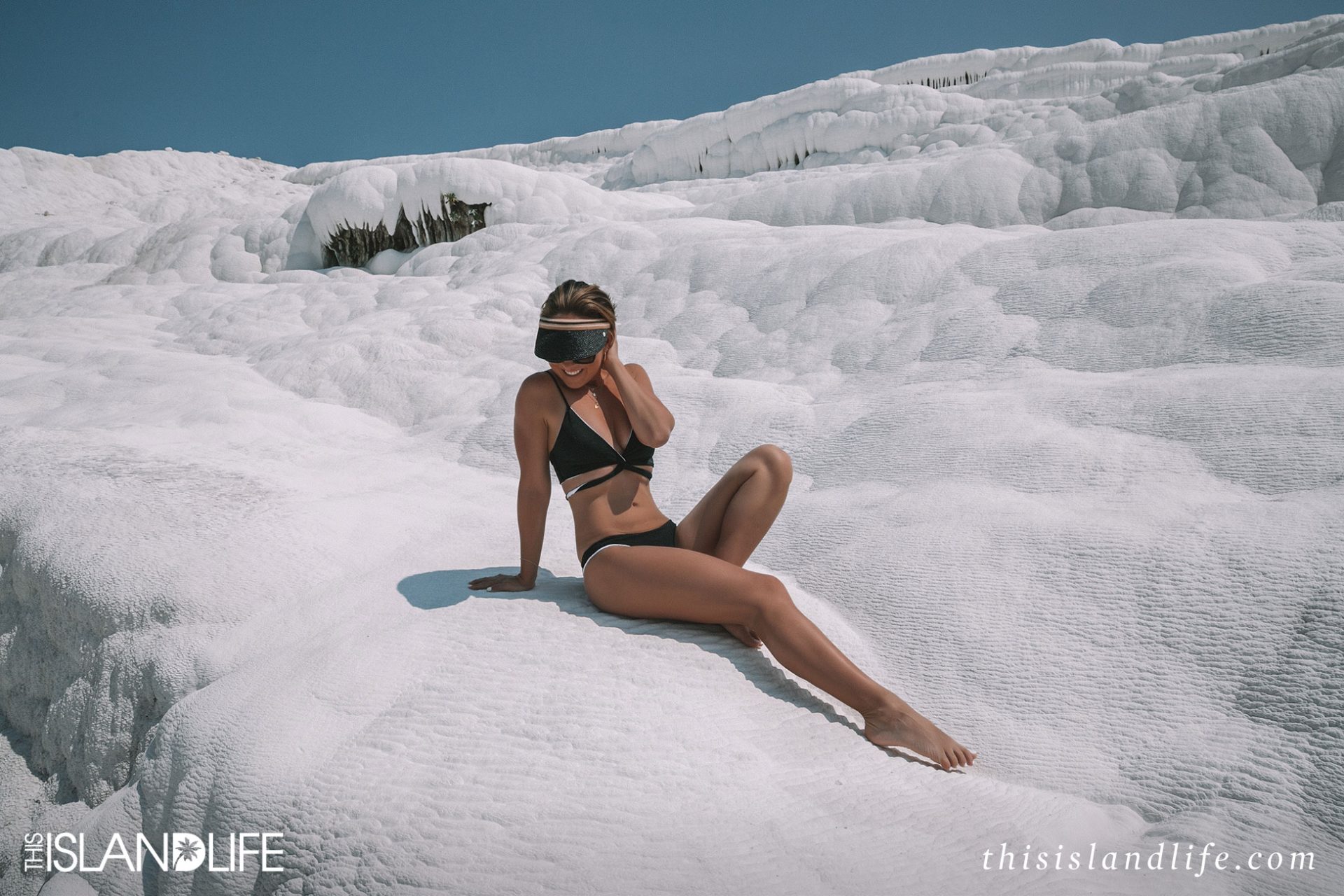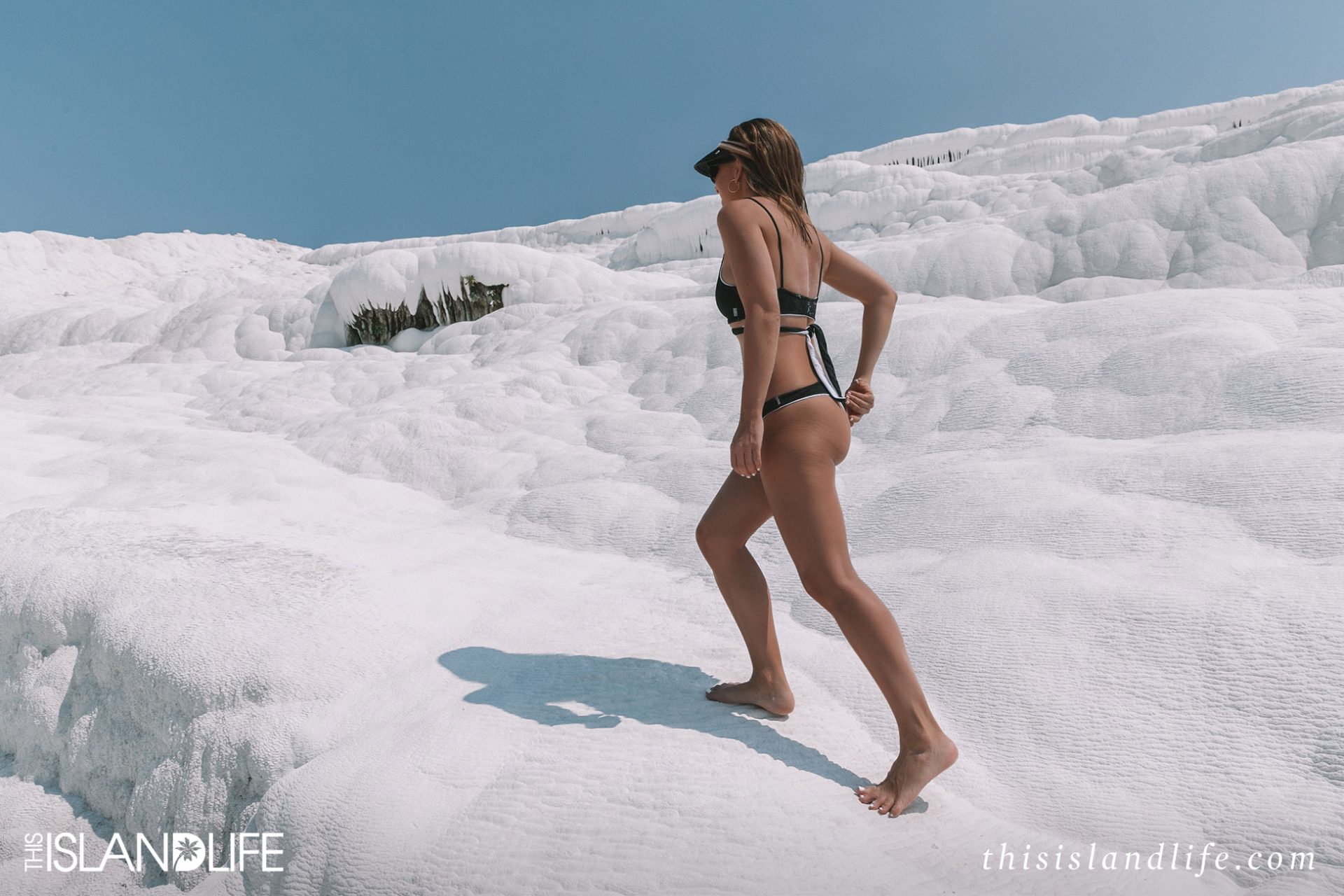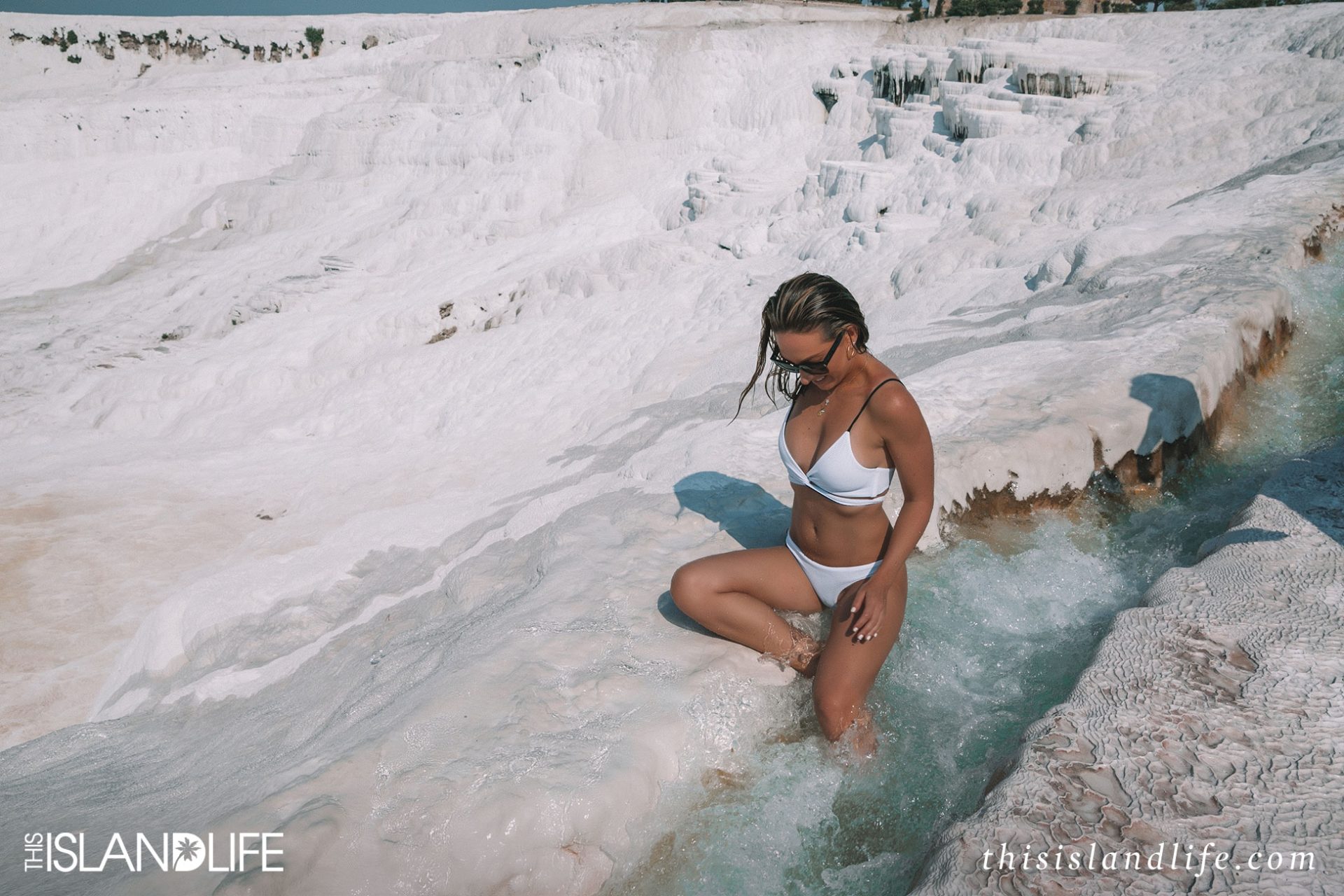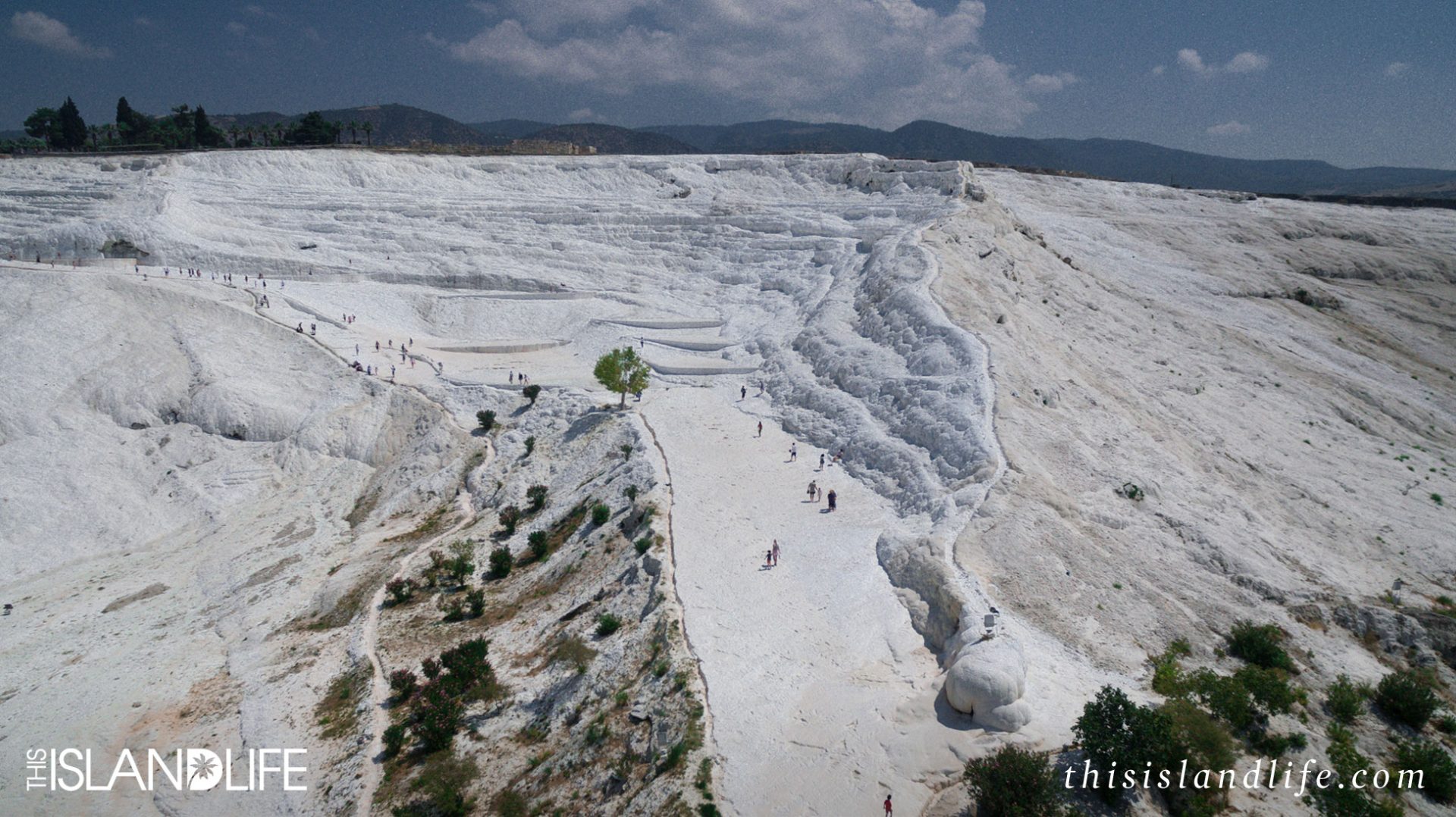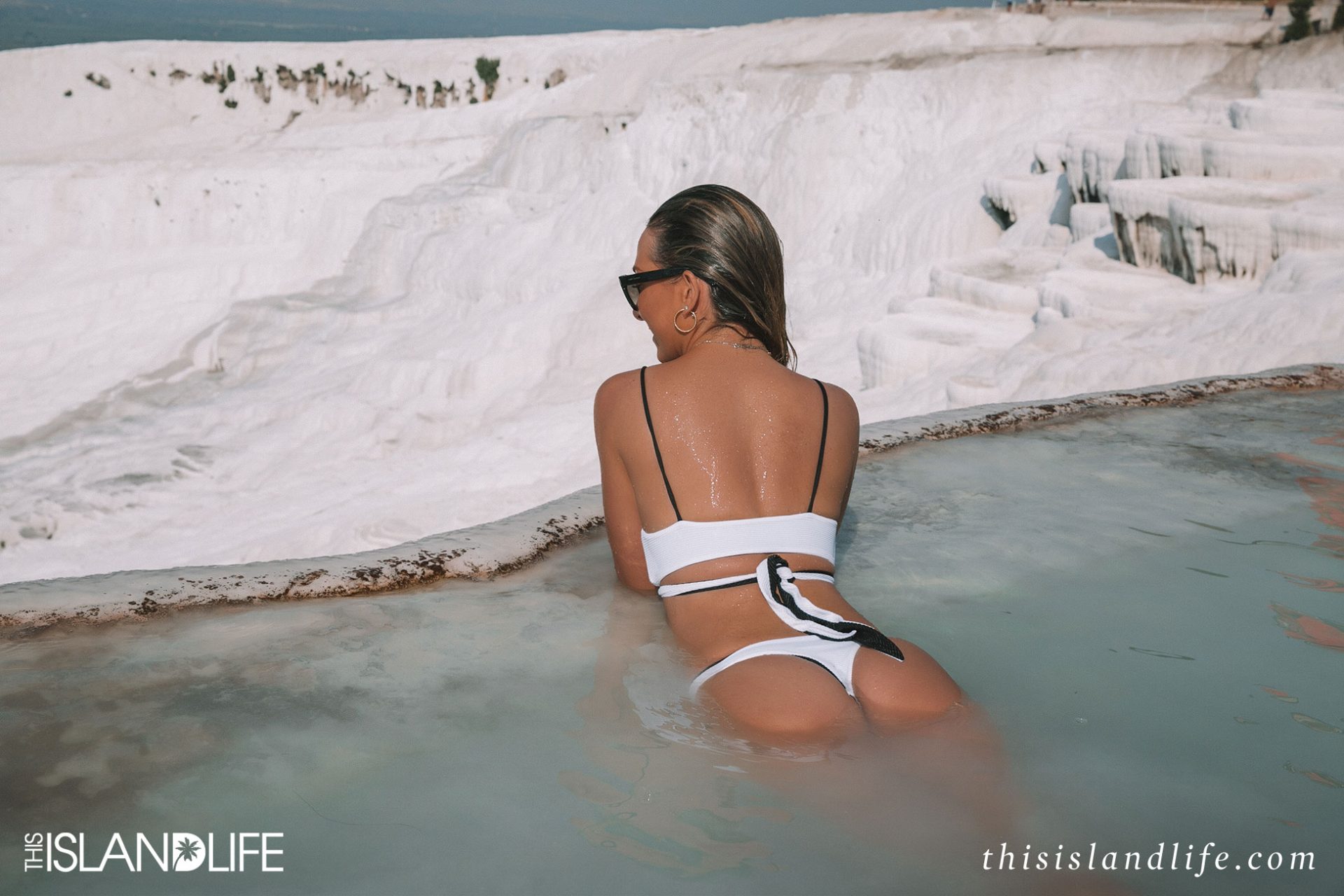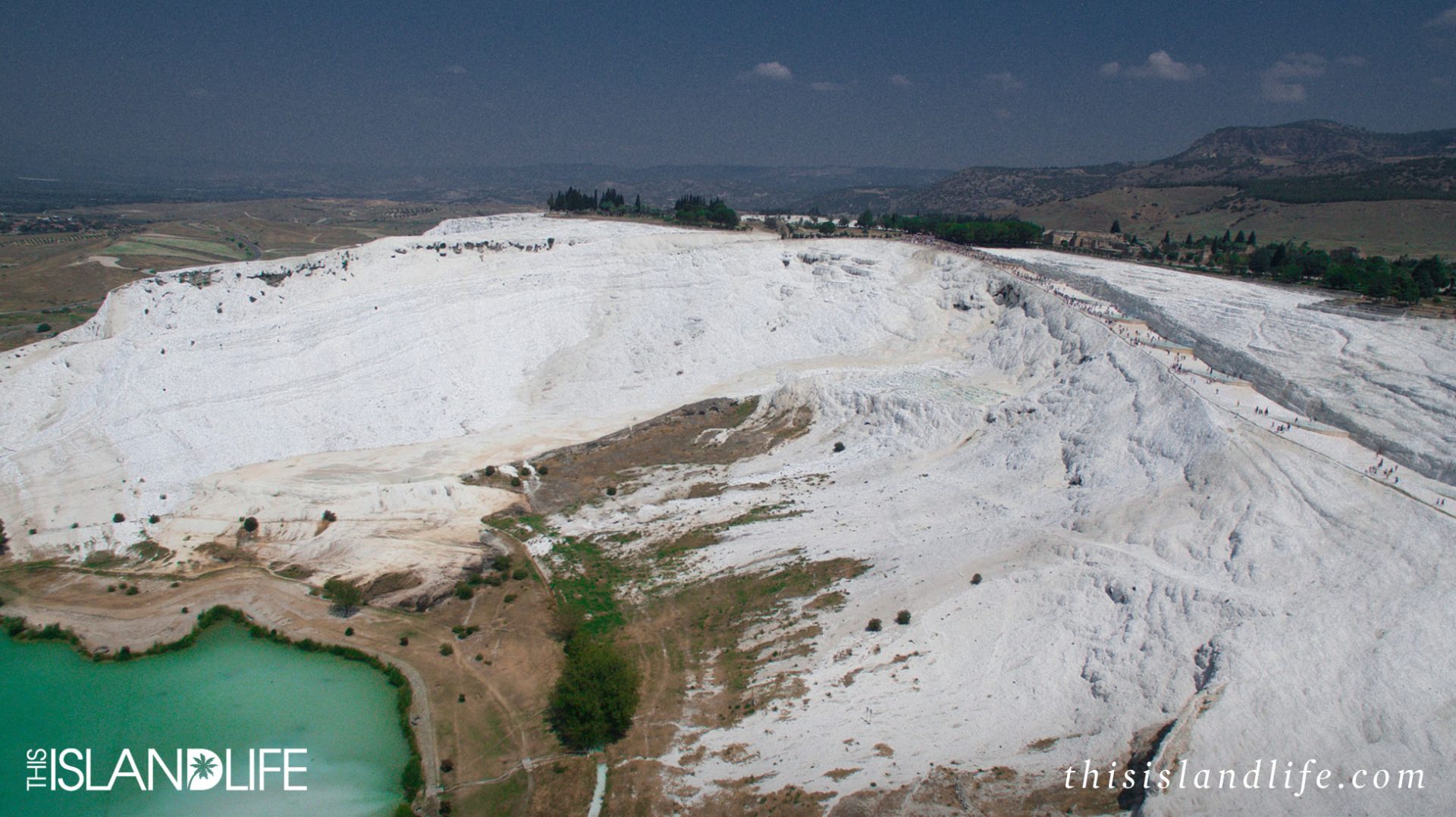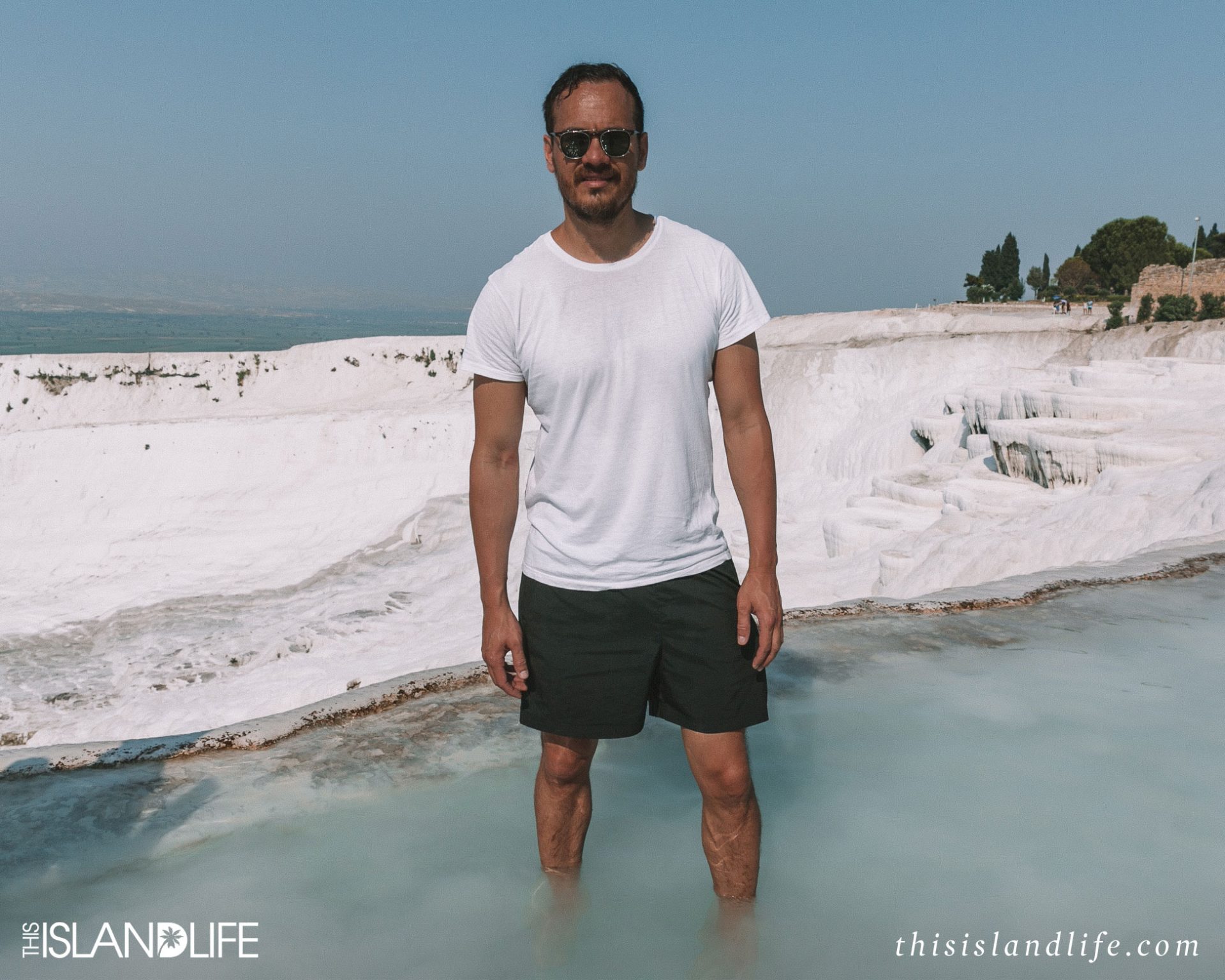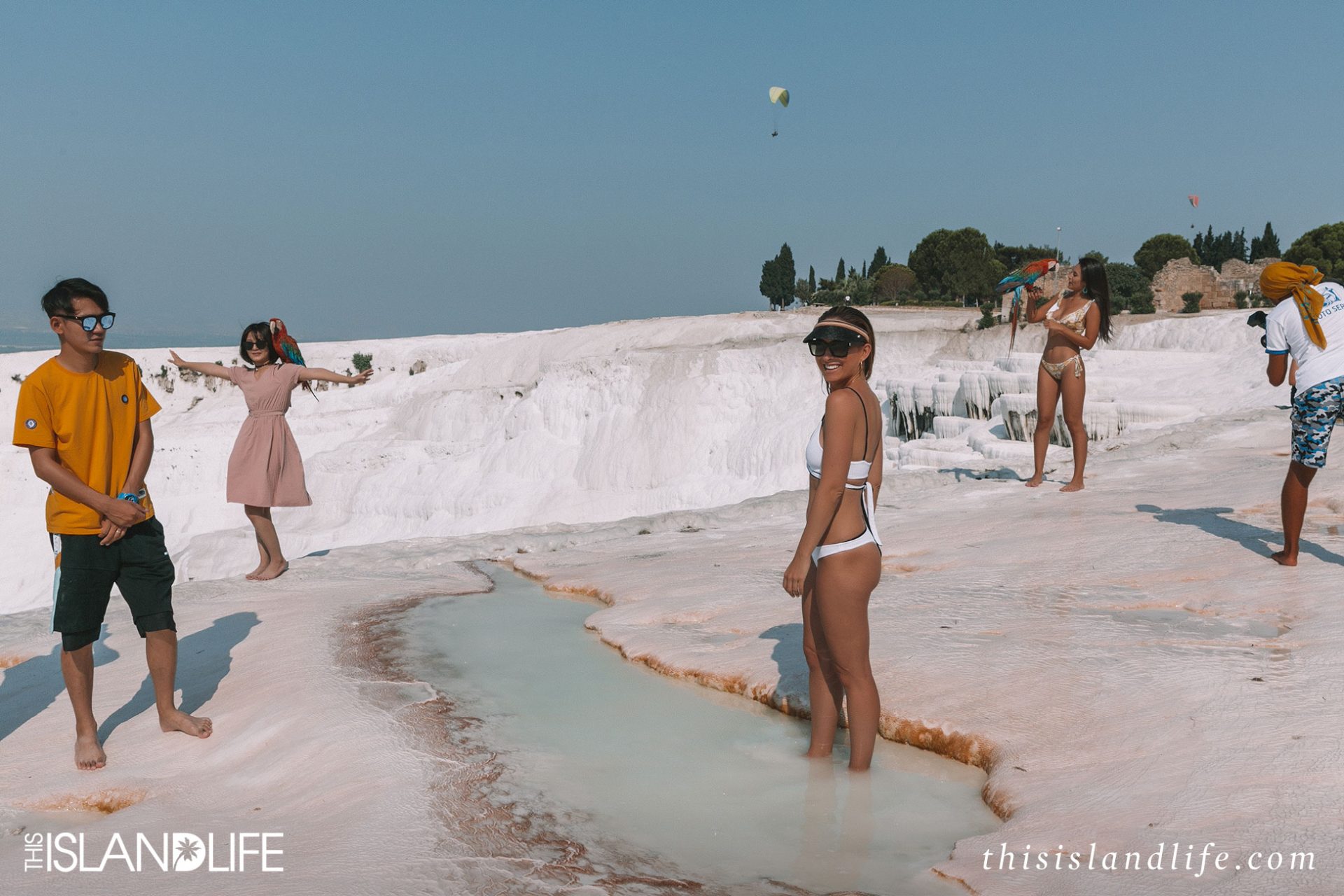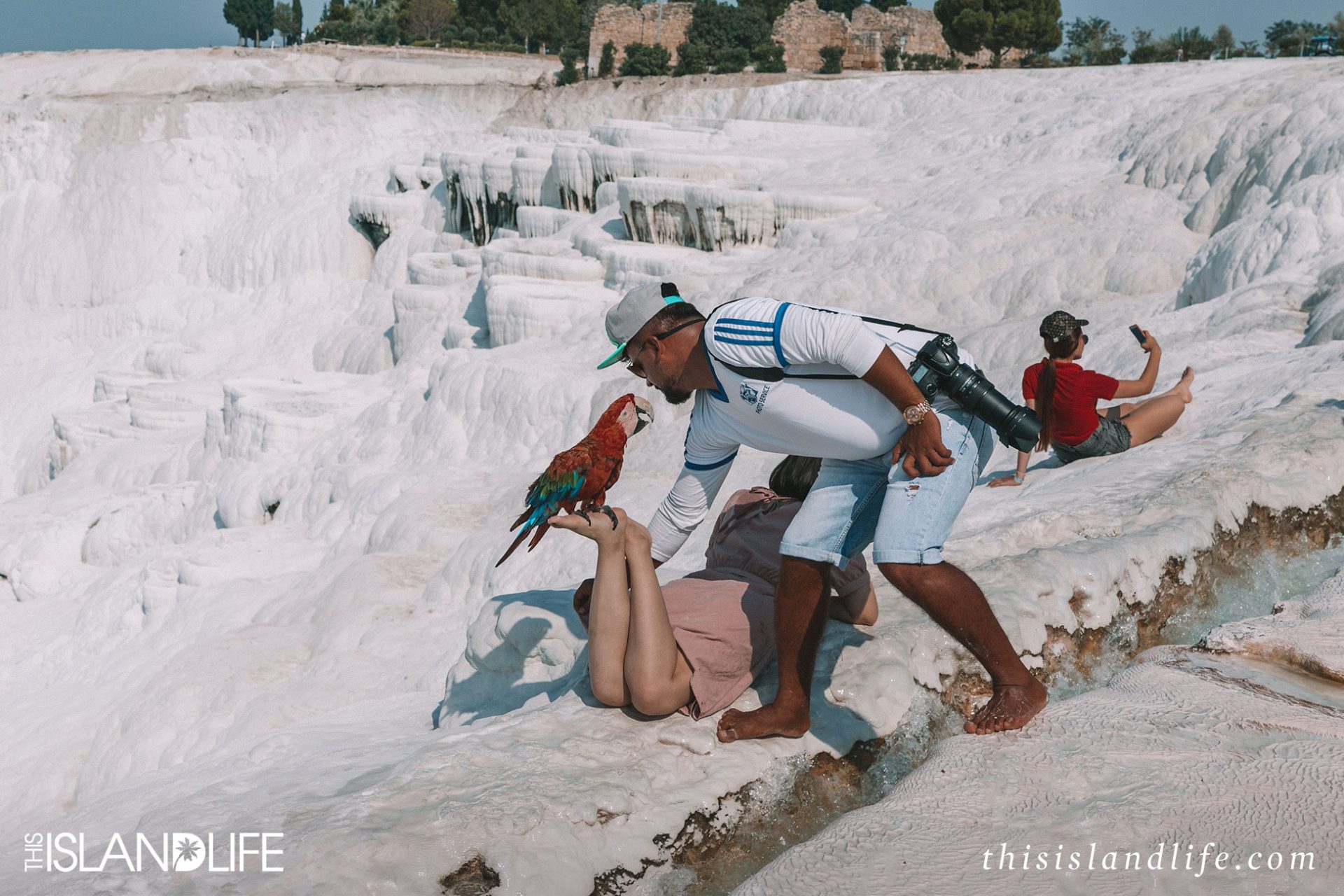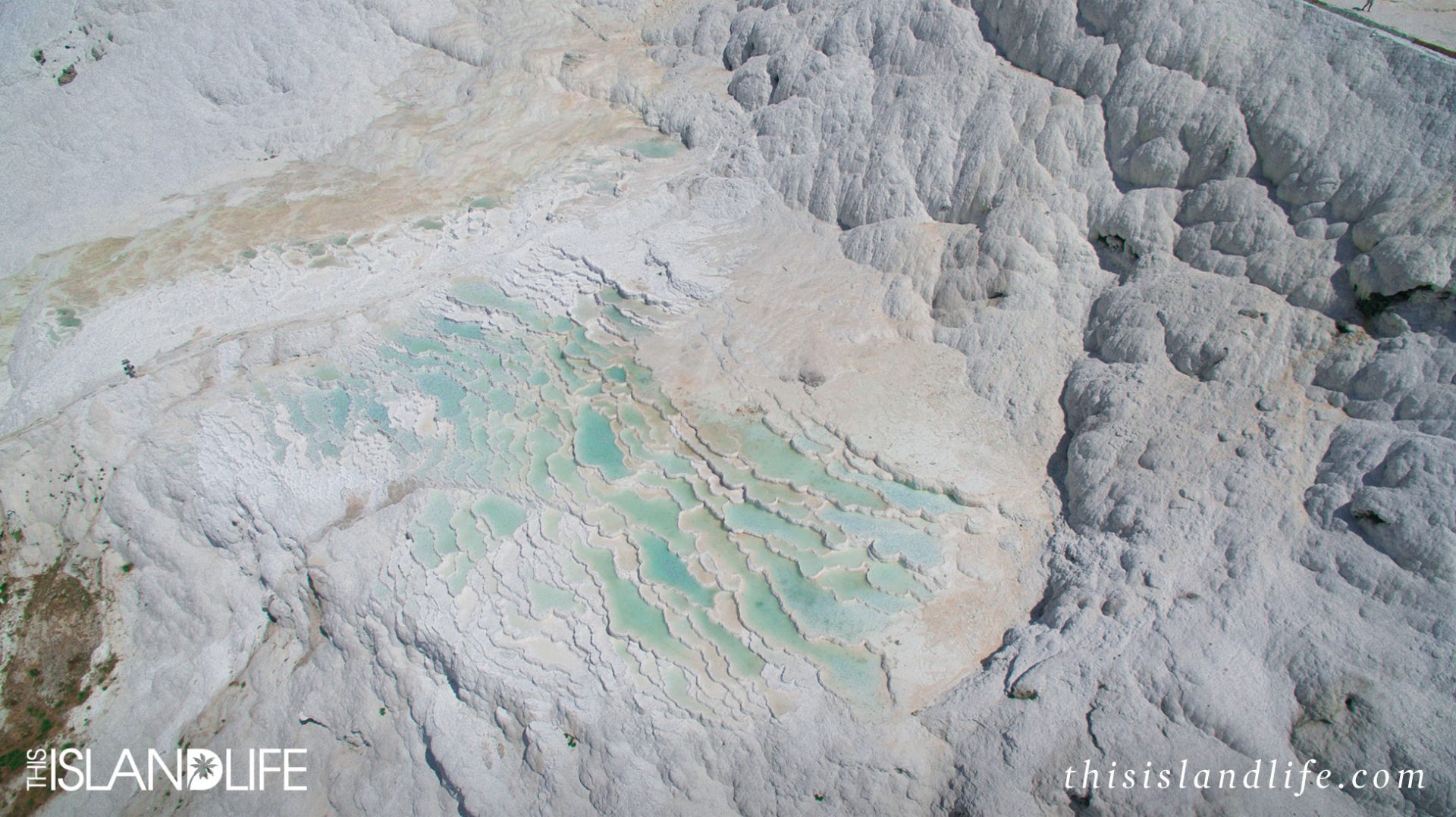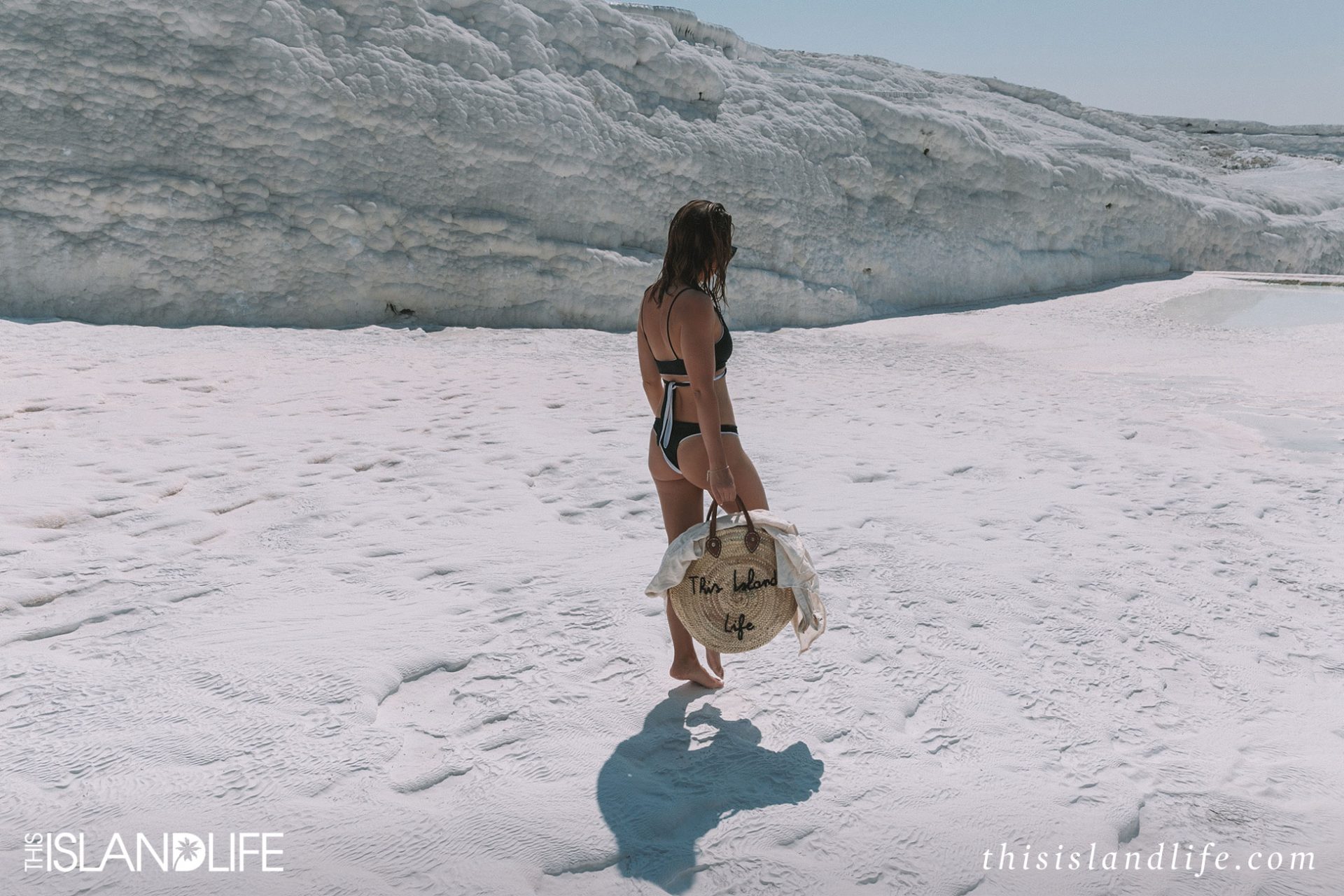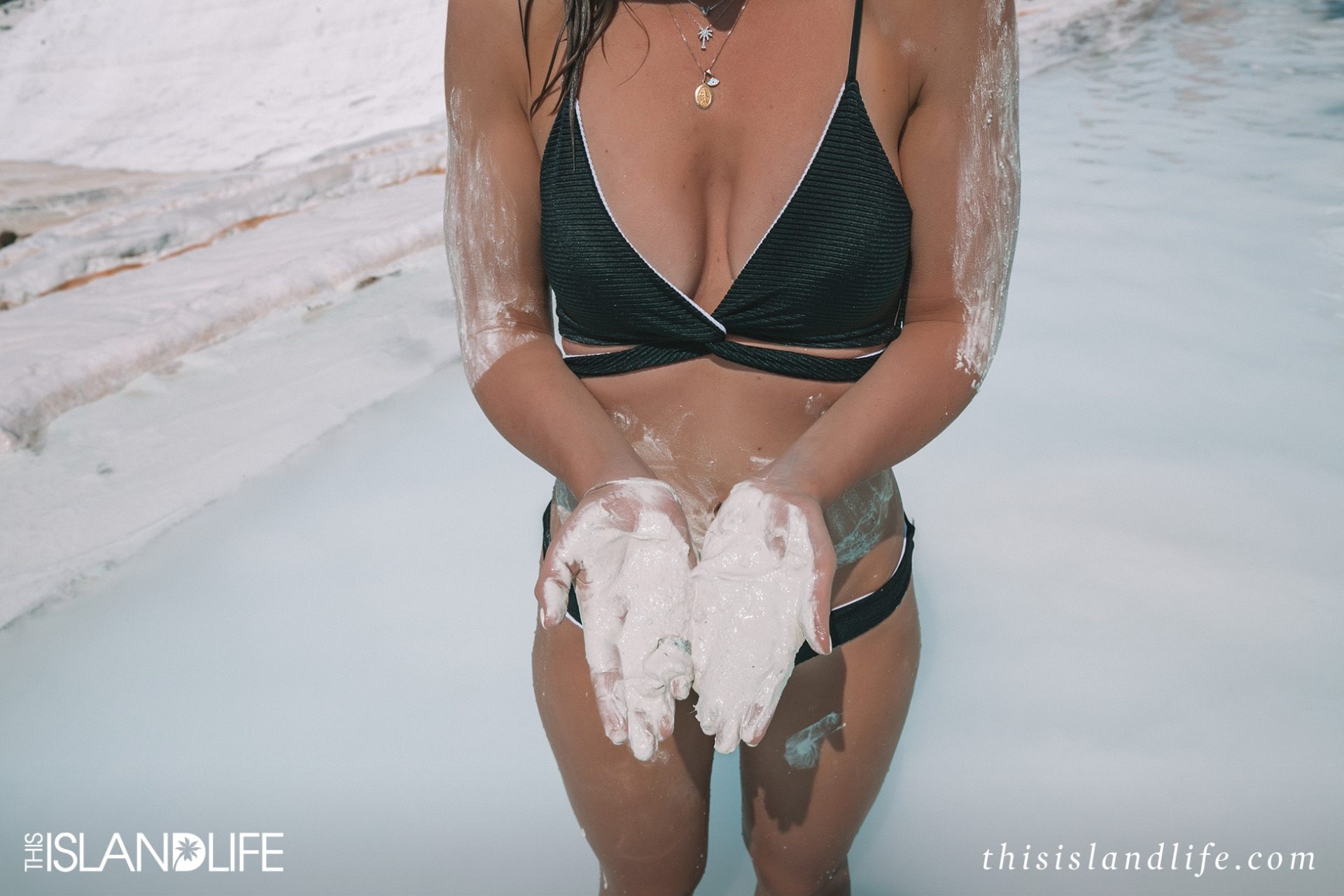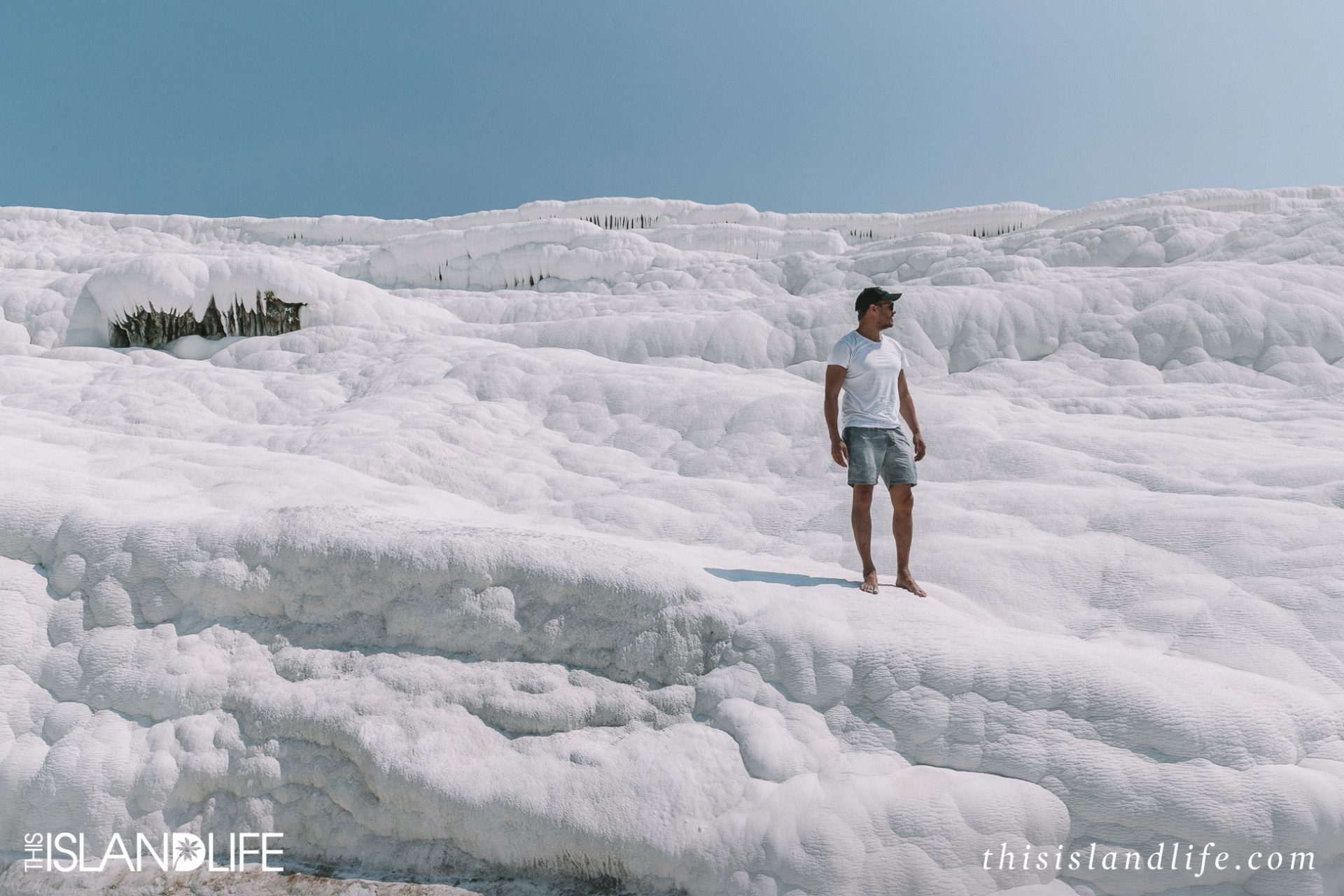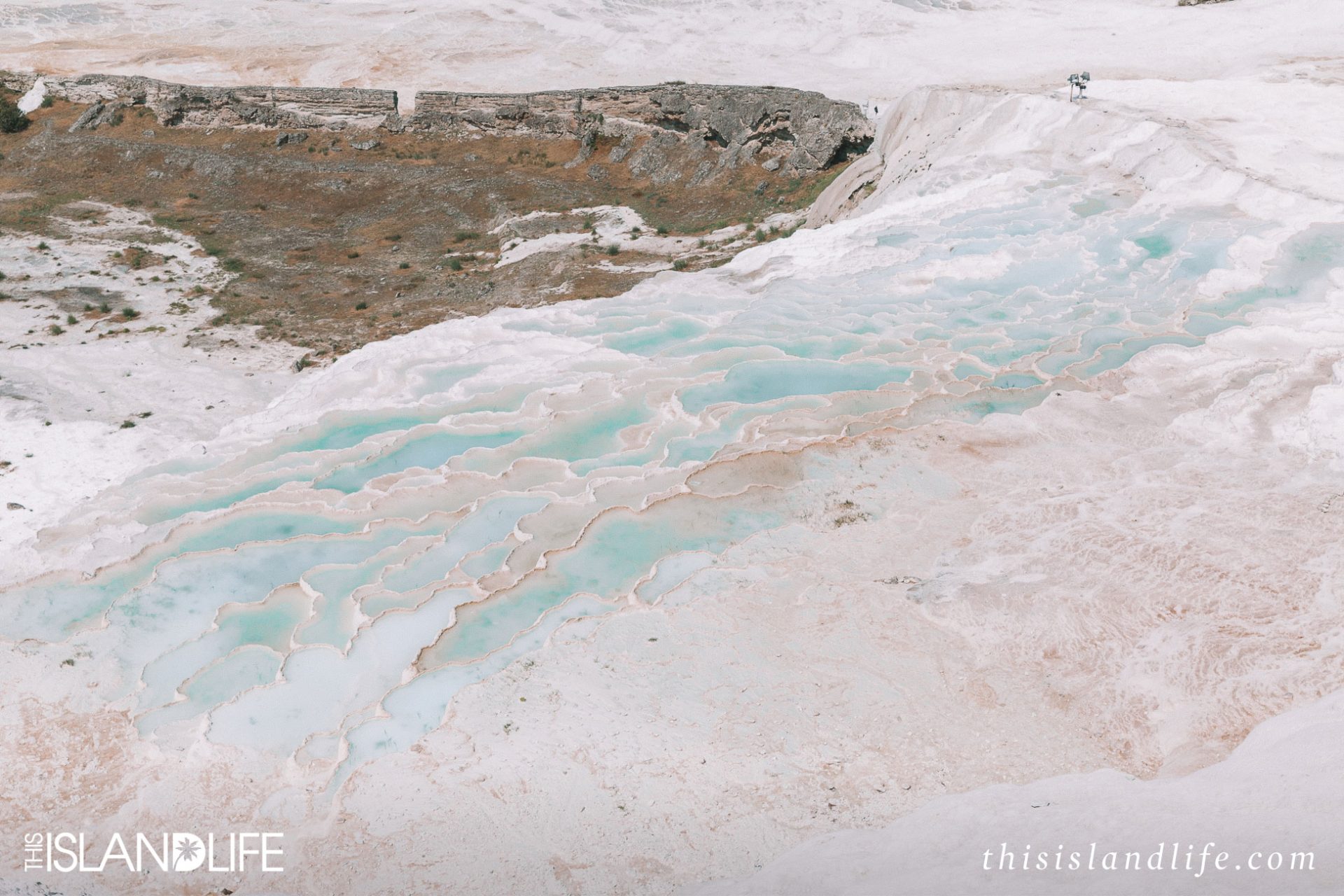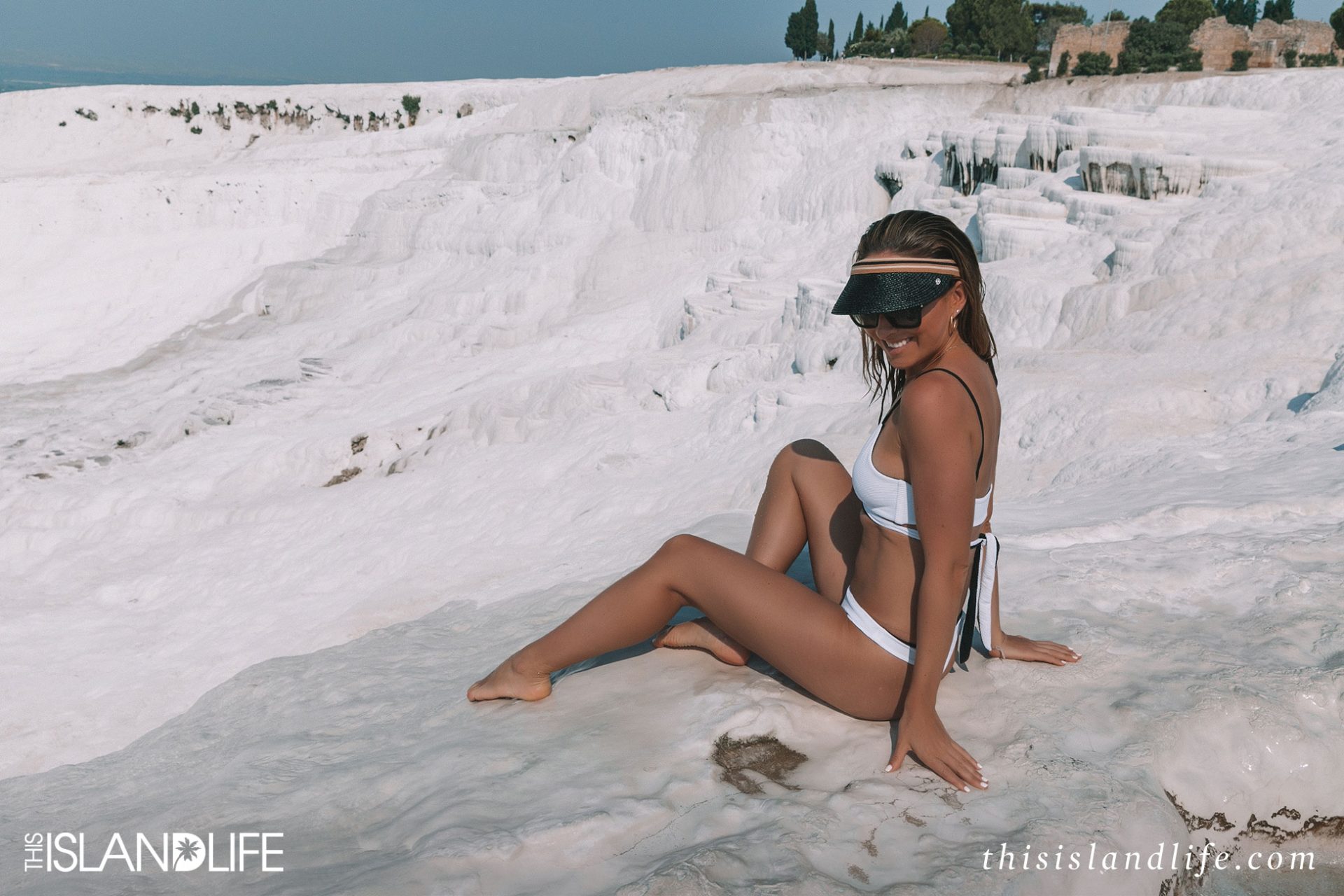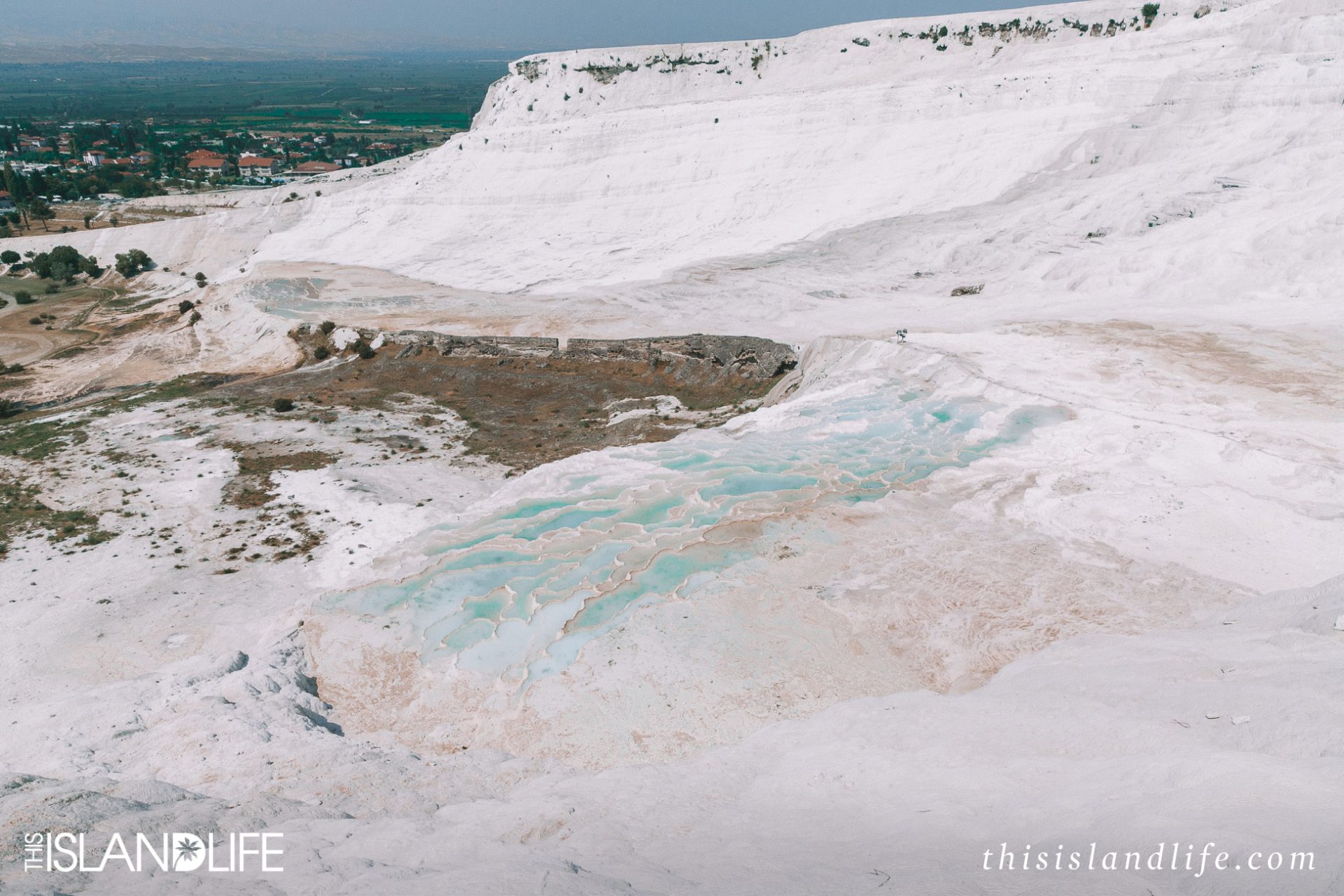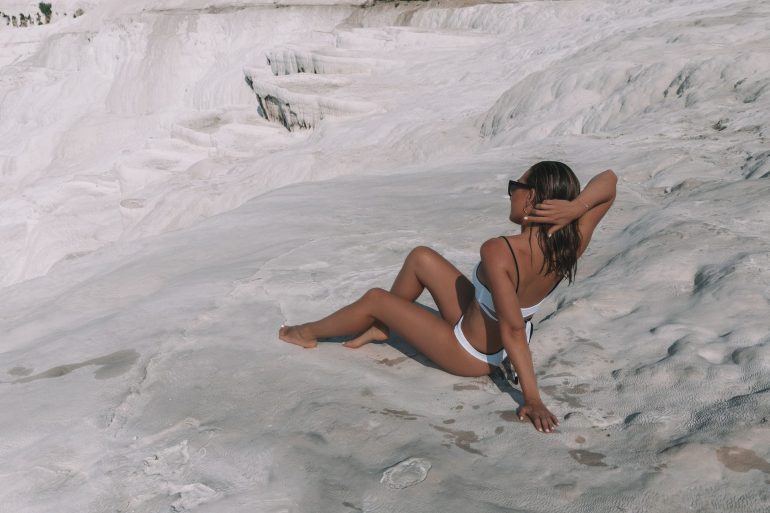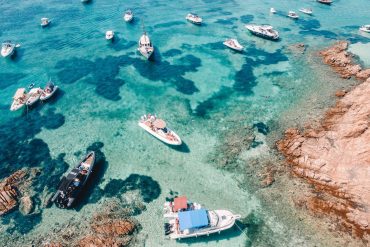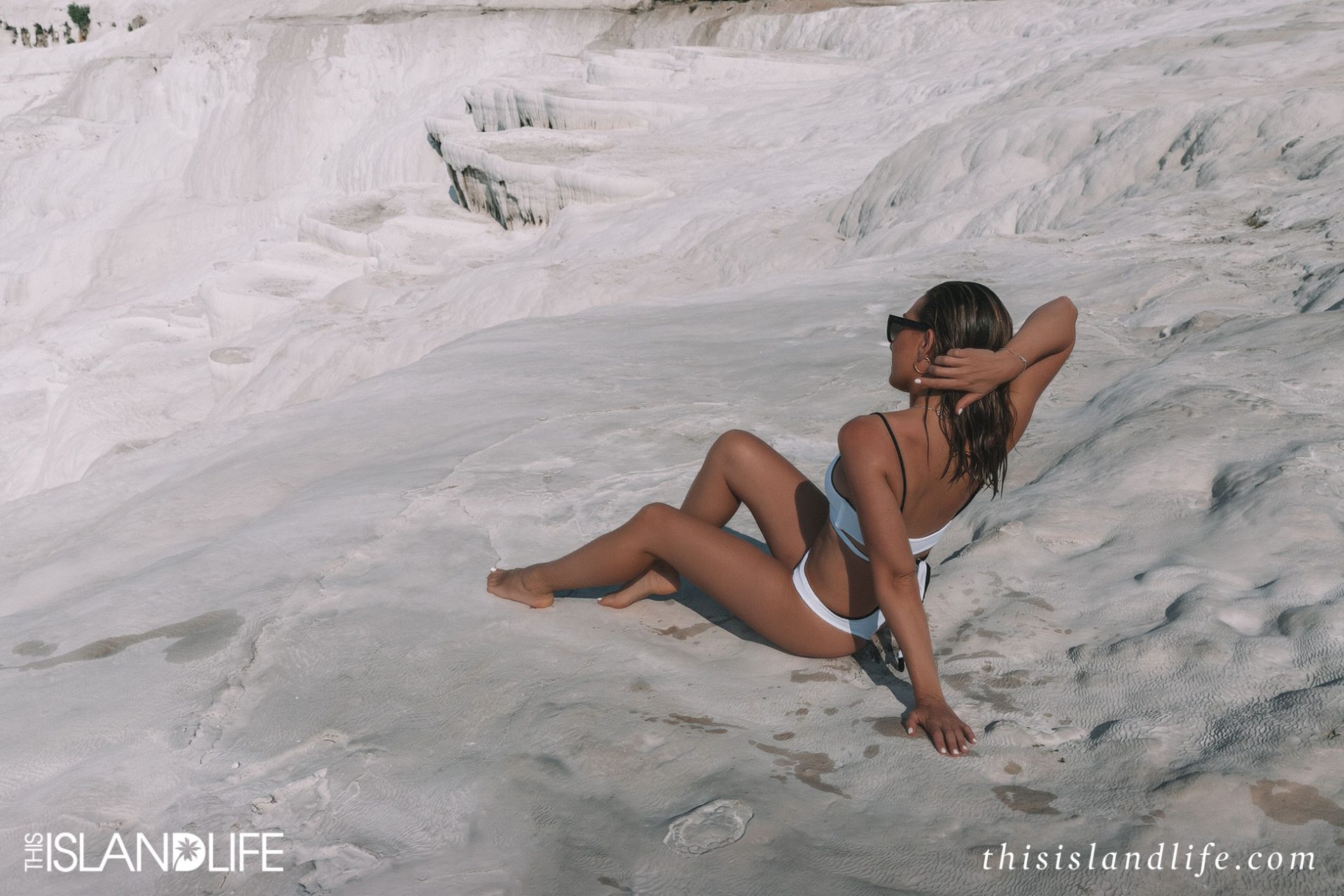
When we started planning our first trip to Türkiye I had two mandatory stops on the itinerary, Cappadocia and Pamukkale. Both places are UNESCO World Heritage Sites and look completely out of this world – like nowhere else on earth. So, after an incredible four days in Cappadocia, we jumped on a quick flight from Cappadocia to Denizli Çardak Airport (via Istanbul), picked up our hire car and headed to our hotel which was a short 15-minute drive from Pamukkale. It was early evening by the time we arrived, so we had dinner and then turned in for the night so we could arrive fresh and early in the morning to the bright white wonderland that is Pamukkale.
We parked at the bottom of the site and walked our way up to the top. It’s a bit of a hike, but the locals told us it’s much easier to find a park at the bottom than it is at the top. Plus, after a week of eating pide (Turkish pizza), I welcomed the exercise! And as a bonus on the way up we saw some very entertaining photoshoots. When we were there in 2018, tourists were paying to have their photo taken with exotic birds. It was such a spectacle watching these guys positioning their customers with the birds against a UNESCO backdrop.
Pamukkale, lovingly referred to as the “Cotton Castle,” showcases a geological marvel that seems straight out of a dream. The sight of the gleaming white terraces, created by the flow of mineral-rich hot springs over centuries, is truly spellbinding. It’s as if nature herself has crafted a cascading waterfall frozen in time, with each terrace radiating a soft glow in the sunlight.
But Pamukkale is not just a feast for the eyes, it’s also a soothing sanctuary for the soul. The warm thermal waters, infused with minerals, have long been believed to possess healing properties. As you dip into the inviting public travertine pools, you can feel the stresses of everyday life melting away, replaced by a sense of tranquillity and rejuvenation. There aren’t many UNESCO World Heritage Sites where you can wear a bikini, so being able to swim in the public pools was such an incredible experience. The iconic terraced travertine pools are closed off to the public and swimming in them is not allowed. Any photos you may have seen of this would have been taken a long time ago – 10 to 30 years ago depending on who you ask.
Wandering through the ancient ruins of Hierapolis, the once-thriving city atop the terraces, is like stepping back in time. As you explore the remarkably preserved remnants of this Roman-era site, the grand theatre, intricate marble sculptures, and Roman bath transport you to a bygone era. Each step uncovers the stories of those who walked these streets centuries ago, offering a connection to the past that is both humbling and awe-inspiring.
One of the highlights of Pamukkale is Cleopatra’s Pool, a place steeped in legend and allure. Imagine immersing yourself in the warm turquoise waters, surrounded by ancient columns and submerged Roman ruins. It’s a chance to embrace the mythical stories and immerse yourself in the same waters where Cleopatra herself is said to have bathed.
Pamukkale is a destination that will etch itself into the depths of your soul. It’s ethereal landscapes and healing waters are something I’ll never forget.
TIP Tips:
- Get permission to fly your drone. If you want to fly your drone, make friends with the security guards. Rather than send our drone up sneakily, we asked the security guard on the way up for permission. I’m not sure what the rules usually are or if they have changed, but when we were there in 2018, he allowed us to send it up for about 20 minutes while standing next to him.
- Make sure you have sun protection. We visited Pamukkale in summer and it was 40 degrees Celsius. Even though I had a long-sleeved shirt and was wearing and reapplying SPF 50+ sunscreen and was drinking lots of water, I got mild sunstroke. The site is extremely exposed, so it’s important to practice sun safety. After my recent melanoma diagnosis, I’ll be taking an umbrella if I visit again!
- Allow at least four hours to explore the site. We spent probably a bit longer as we were taking photos. And by the time we made it to the top it was around lunchtime and was incredibly busy.
- The colour of the protected travertine pools changes with the seasons. All the photos I had seen of Pamakkale had bright aqua travertine pools. But when we arrived, I was surprised to see that the protected pools (photo below) were completely white on top. Apparently in summer they completely dry out, whereas if you visit during cooler months, they will be a bright aqua blue. The public pools that you are allowed to swim in are filled with water daily, so they never dry out.
- Pamakkale gets sunset! While early morning is the best time to go to beat the crowds, the best light is golden hour just before sunset. If I had more time, I’d do the same early morning to get the bright photos I like without the crowds, and then I’d come back for sunset photos!
